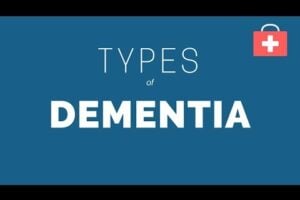Researchers are developing blood tests for Alzheimer’s that are less invasive and costly. A new one called Simoa may be the best answer yet.
Researchers report an advance in the development of a blood test that could help detect pathological Alzheimer’s disease in people who are showing signs of dementia.
Simoa
The new blood testing technique, called Simoa, should be less invasive and less costly than current brain imaging and spinal fluid tests. The blood test detects the abnormal accumulation of a form of tau protein known as phosphorylated-tau-181 (ptau181), which is a biomarker that suggests brain changes from Alzheimer’s. The study, funded by the National Institutes of Health, was published on March 2 in Nature Medicine.
The process that destroys the brain involves two proteins called beta-amyloid and tau. Beta-amyloid clumps into plaques, which slowly build up between brain cells. Abnormal tau accumulates inside brain cells, forming tangles.
Better Alzheimer’s Tests
Researchers have found that PET scans of the brain and lab tests of spinal fluid can reveal disease-related changes, or pathology, twenty years before the onset of symptoms. Although the disorder is not reversable, better Alzheimer’s tests are important because:
- Early treatment may help preserve daily functioning for some time.
- Early diagnosis would also enable testing of novel drugs and other treatment approaches.
- Better, faster, less expensive Alzheimer’s tests would speed up research by shortening the process of selecting research participants.
Currently, PET imaging is expensive and involves radioactive agents, and spinal fluid tests are invasive, complex, and time-consuming. Researchers are looking for simpler, more cost-effective tests.
“The considerable time and resources required for screening research participants with PET scans and spinal taps slow the pace of enrollment for Alzheimer’s disease treatment studies,” said Richard J. Hodes, M.D., director of NIH’s National Institute on Aging (NIA), which funded much of the study. “The development of a blood test would enable us to rapidly screen a much larger and more diverse group of volunteers who wish to enroll in studies.”
International Team
An international team of researchers led by Adam Boxer, M.D., Ph.D., at the University of California, San Francisco, used the new test to measure the concentration of ptau181 in plasma, which is the liquid part of blood that carries the blood cells. The samples were collected from more than 400 participants from the University of California, San Francisco Memory and Aging Center, part of the NIA-funded Alzheimer’s Disease Research Center; the NIH-supported Advancing Research and Treatment for Frontotemporal Lobar Degeneration consortium; and a research study sponsored by Eli Lilly.
Their analysis demonstrated that the ptau181 in plasma could differentiate healthy participants from those with Alzheimer’s pathology, and differentiate those with Alzheimer’s pathology from a group of rare neurodegenerative diseases known collectively as frontotemporal lobar degeneration (FTLD).
Same Results, Faster, Cheaper, Better
“It has become clear that there are many possible biological pathways to dementia,” said Roderick Corriveau, Ph.D., program director at NIH’s National Institute of Neurological Disorders and Stroke (NINDS), which also supported the study. “Finding a blood test that specifically identifies the presence of Alzheimer’s pathology in the brain should greatly help researchers develop better treatments for the many who suffer from dementia.”
In addition, the results with the plasma ptau181 test mirrored results with two established biomarker tests for Alzheimer’s — a spinal fluid ptau181 test and a PET brain scan biomarker known as amyloid protein. The research team, which includes the NIH’s ARTFL–LEFFTDS Longitudinal Frontotemporal Lobar Degeneration (ALLFTD) research consortium that was announced last year, is now aiming to refine and improve the ptau181 blood test method.
“Because of NIH’s investments, we are poised to make dramatic advances in biomarker development for Alzheimer’s disease, FTLD, and related neurodegenerative disorders,” said Eliezer Masliah, M.D., director of NIA’s Division of Neuroscience.
Doctors + Researchers
In the future, improved biomarkers like ptau181 may help not just researchers but also physicians to detect and diagnose Alzheimer’s and related neurodegenerative disorders earlier, when interventions are more likely to be effective.
“This research is an example of how studies on rare diseases, in this case FTLD, may provide important insights into common disorders such as Alzheimer’s disease, which affects millions of people,” said Tiina Urv, Ph.D., program officer in the Office of Rare Diseases Research at the NIH’s National Center for Advancing Translational Sciences (NCATS), which also supported the study.
Second Opinion, Same Answers
A different international team, this one led by Oskar Hansson, M.D., Ph.D., at Lund University in Sweden and supported in part by NIH, reported similar findings. Using the same plasma ptau181 test, these researchers were able to differentiate between Alzheimer’s and other neurodegenerative diseases nearly as well as they could with a spinal fluid ptau181 test and a PET brain scan for tau protein. In addition, they followed participants for several years and observed that high levels of plasma ptau181 among those who were cognitively normal or had mild cognitive impairment may be used to predict later development of Alzheimer’s dementia. These results were also published in Nature Medicine.
REFERENCES:
- Thijssen EH et al. Diagnostic value of plasma phosphorylated tau181 in Alzheimer’s disease and frontotemporal lobar degeneration. Nature Medicine. March 2, 2020. doi: 10.1038/s41591-020-0762-2.
- Janelidze S et al. Plasma P-tau181 in Alzheimer’s disease: relationship to other biomarkers, differential diagnosis, neuropathology and longitudinal progression to Alzheimer’s dementia. Nature Medicine. March 2, 2020. doi: 10.1038/s41591-020-0755-1.
SUPPORT:
- The research led by Adam Boxer at the University of California, San Francisco was funded by multiple NIH grants, including LEFFTDS (U01AG045390) and the Frontotemporal Lobar Degeneration Clinical Research Consortium (U54NS092089). U54NS092089 is part of the Rare Diseases Clinical Research Network (RDCRN), an initiative of the NCATS Office of Rare Diseases Research (ORDR), and is funded through collaboration between NCATS and NINDS. Other grants include P01AG019724, U24AG21886, R01AG045611, P50AG023501, P50AG016574, R01AG045611, R01AG038791, K08AG052648 and K24AG053435. The research led by Oskar Hansson at Lund University was funded in part by NIH grants U24NS072026 and P30AG19610.
SOURCES:
-
National Institutes of Health (NIH):
NIH, the nation’s medical research agency, includes 27 Institutes and Centers and is a component of the U.S. Department of Health and Human Services. NIH is the primary federal agency conducting and supporting basic, clinical, and translational medical research, and is investigating the causes, treatments, and cures for both common and rare diseases. For more information about NIH and its programs, visit www.nih.gov. NIH…Turning Discovery Into Health®. - About the National Institute on Aging (NIA): NIA leads the U.S. federal government effort to conduct and support research on aging and the health and well-being of older people. Learn more about age-related cognitive change and neurodegenerative diseases via NIA’s Alzheimer’s and related Dementias Education and Referral (ADEAR) Center website. For information about a broad range of aging topics, visit the main NIA website and stay connected.
- About the National Institute of Neurological Disorders and Stroke (NINDS): NINDS is the nation’s leading funder of research on the brain and nervous system. The mission of NINDS is to seek fundamental knowledge about the brain and nervous system and to use that knowledge to reduce the burden of neurological disease.
- About the National Center for Advancing Translational Sciences (NCATS): NCATS conducts and supports research on the science and operation of translation — the process by which interventions to improve health are developed and implemented — to allow more treatments to get to more patients more quickly. For more information about how NCATS is improving health through smarter science, visit https://ncats.nih.gov.












Is Simoa covered by Medicare?